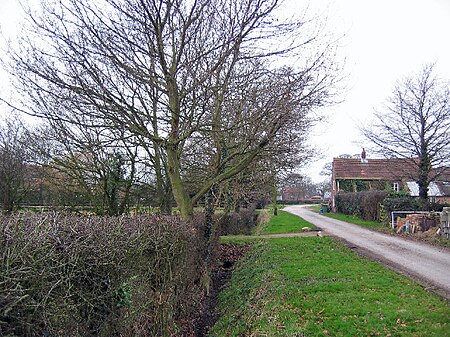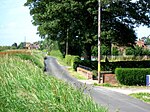Balkholme

Balkholme is a hamlet and former civil parish, now in the parish of Kilpin and the East Riding of Yorkshire, England. In 1931 the parish had a population of 78.Balkholme is to the south of the B1230 Howden to Gilberdyke road as it crosses the M62 motorway, and 1.5 miles (2.4 km) north-east of the parish village of Kilpin. The county town of Beverley is 17 miles (27 km) to the north-east, the town of Howden 2.5 miles (4 km) west, and the town centre of Goole approximately 4 miles (6 km) south-west. In 1823, Baines recorded that Balkholme was in the parish of Howden, and the wapentake and liberty of Howdenshire, and had a population of 105 including eight farmers. Balkholme was formerly a township in the parish of Howden, from 1866 Balkholme was a civil parish in its own right, on 1 April 1935 the parish was abolished and merged with Kilpin and Eastrington, part also went to form Gilberdyke.At the east side of Balkholme is West Linton Farmhouse, a Grade II listed late 18th-century house, of two-storeys and three-bays. It is built of red brick in Flemish bond, with pantile roof, and has a 19th-century wing.There is a small RAF memorial garden on Brow Lane where a mid-air collision occurred during the Second World War between two Halifax Bombers of 578 Squadron.
Excerpt from the Wikipedia article Balkholme (License: CC BY-SA 3.0, Authors, Images).Balkholme
Brow lane,
Geographical coordinates (GPS) Address Nearby Places Show on map
Geographical coordinates (GPS)
| Latitude | Longitude |
|---|---|
| N 53.743631 ° | E -0.811374 ° |
Address
Brow lane
Brow lane
DN14 7XH
England, United Kingdom
Open on Google Maps










